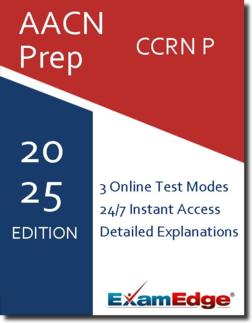AACN CCRN-P (PCCRN) Practice Tests & Test Prep by Exam Edge - Test Reviews
Based on 25 Reviews
- Real Exam Simulation: Timed questions and matching content build comfort for your AACN CCRN-P test day.
- Instant, 24/7 Access: Web-based AACN Pediatric, Acute/Critical Care Nursing Certification practice exams with no software needed.
- Clear Explanations: Step-by-step answers and explanations for your AACN exam to strengthen understanding.
- Boosted Confidence: Reduces anxiety and improves test-taking skills to ace your AACN Pediatric, Acute/Critical Care Nursing Certification (PCCRN).

AACN CCRN-P (PCCRN) Practice Tests & Test Prep by Exam Edge - Review
AACN Pediatric, Acute/Critical Care Nursing Certification - Reviews
Excellent
Based on
125
reviews
“ Today, I sat for and passed the PCCN Exam! I purchased and completed all 20 of your practice tests, and I just want to say thank you for providing this resource to study, and for helping me to build the stamina and confidence to complete all those questions in a timely manner! Thanks again! Kristen
Kristen, NJ
“ Thank you very much for making this such great review test material. It boosted my confidence in passing the PCCN (been out of nursing school for 18 years). I just took the test today and I did it.
Vicky , Arizona
“ Checking in was so impersonal and harsh. The exam room was freezing cold, difficult to concentrate. The computer screen height was so high that I had to tilt my head way back to see it! I left there freezing cold, and with a horrible crook in my neck. I shall drive the distance next time to find a m ...
Read More
Darlene , North Chesterfield, Virginia
See why our users from 154 countries love us for their exam prep! Including 25 reviews for the AACN CCRN-P exam.
Exam Edge is an Industry Leader in Online Test Prep. We work with our Institutional Partners to offer a wide array of practice tests that will help you prepare for your big exam. No Matter how niche field of interest might be, were here to help you prepare for your test day.
| 2.8M | 4.5M | |
| Users | Tests Taken | |
| 100K | 19 | |
| Unique Exams | Years in Business | |


